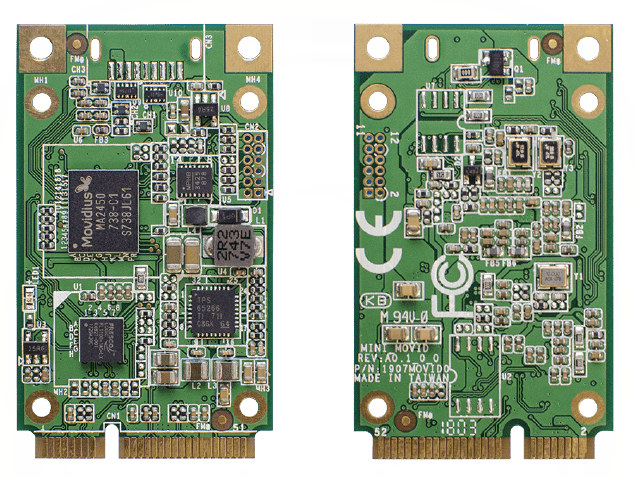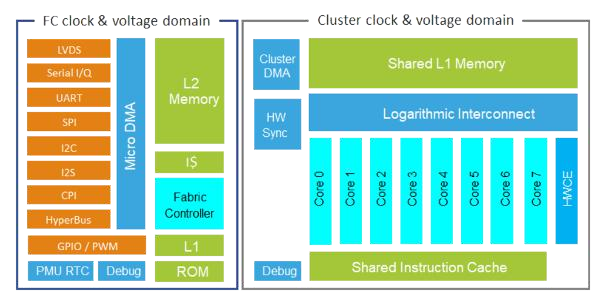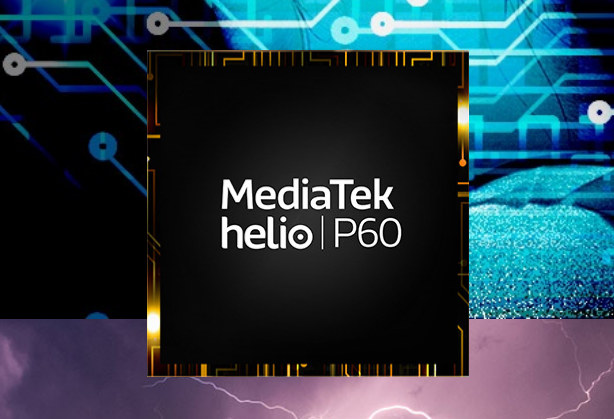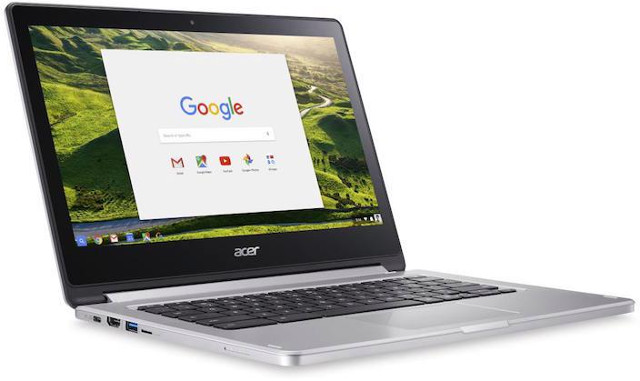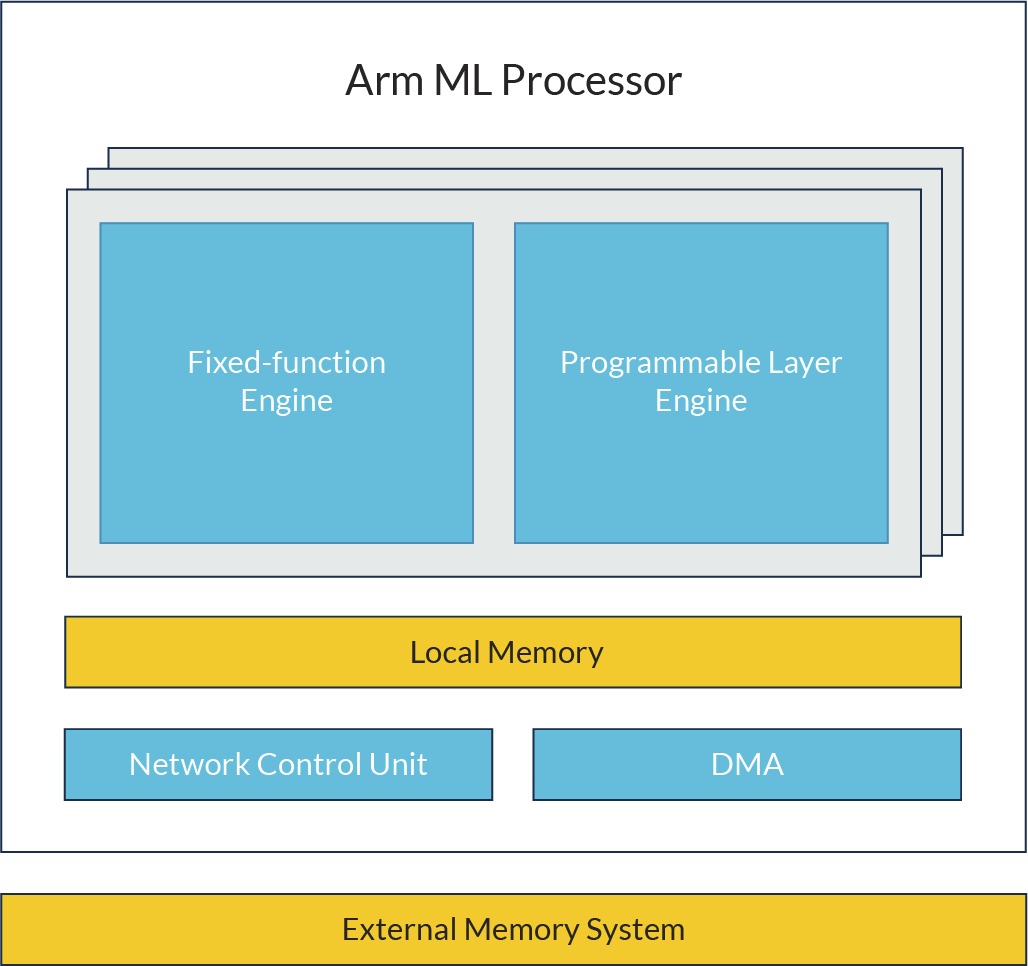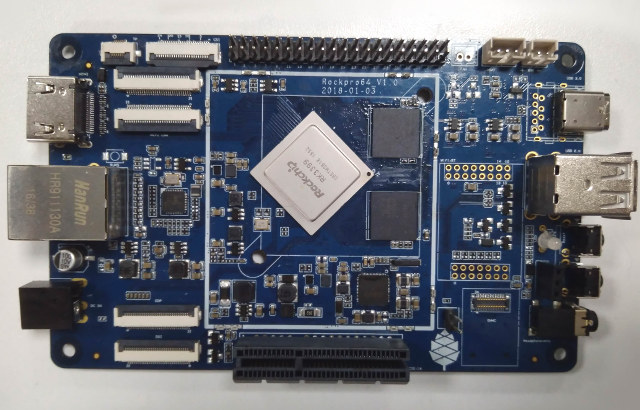AAEON’s Up Board has given us some affordable Intel development boards over the years with products such as the Cherry Trail based UP Board, or Apollo Lake powered UP Squared board among others, that are competitively priced against equivalent Arm development boards. The company has now launched a new UP AI Edge family, which will include hardware based on Intel Altera FPGA or Intel Movidius VPU (Vision Processing Unit). Their first product is based on the latter, more exactly Movidius 2 2450 VPU, and instead of being a standalone board, UP AI Core is a mini PCIe card that can fit into any 64-bit Intel board or computer. UP AI Core card specifications: SoC – Intel Movidius Myriad 2 2450 VPU System Memory – 512MB DDR SDRAM Mini PCIe edge connector Dimensions – 51 x 30 mm Host computer/board requirements System Memory – 1GB RAM or more Storage – 4GB […]
GreenWaves GAP8 is a Low Power RISC-V IoT Processor Optimized for Artificial Intelligence Applications
GreenWaves Technologies, a fabless semiconductor startup based in Grenoble, France, has designed GAP8 IoT application processor based on RISC-V architecture, and optimized for image and audio algorithms including convolutional neural network (CNN) inference with high energy efficiency thanks to an 8-core computational cluster combined with a convolution hardware accelerator. The design is based on RISC-V based Parallel Ultra Low Power (PULP) computing open-source platform. The new processor targets industrial and consumer products integrating artificial intelligence, and advanced classification such as image recognition, counting people and objects, machine health monitoring, home security, speech recognition, consumer robotics, wearables and smart toys. Some of GAP8 processor specifications: 1x extended RISC-V fabric controller core with 16 kB data and 4 kB instruction cache for system control 8x extended RISC-V compute cores with 64 kB shared data memory and 16 kB shared instruction cache 1x Hardware optimized synchronization unit 1x Hardware Convolution Engine (HWCE) Multi […]
Mediatek Helio P60 Cortex A73/A53 Mobile Processor Includes NeuroPilot AI technology
Neural Network Accelerators (NNA) may have become a must-have block in high-end mobile processors. Huawei Kirin 970, Samsung Exynos 9810, and Qualcomm Snapdragon 845 (via its Hexagon DSP) processors all come with NNA or NPU (Neural Processing Unit) to speed up tasks and comsume less power for tasks related to artificial intelligence / machine learning. Mediatek has also jumped on the bandwagon with Helio P60 chipset featuring four Cortex A73 cores, four Cortex A53 cores, an Arm Mali-G72MP3 GPU and a multi-core mobile APU (AI Processing Unit) leveraging the company’s NeuroPilot AI technology. Mediatek P60 key specifications: CPU – big.LITTLE Octa-core with four Arm Cortex-A73 up 2.0 GHz and four Arm Cortex-A53 up to 2.0 GHz GPU – Arm Mali-G72 MP3 at 800MHz Multi-core AI processing unit (Mobile APU) – 280 GMAC/s; offers deep learning facial recognition, object and scene identification, user behavior-informed performance and other AI and AR application […]
Samsung Galaxy S9 and S9+ Smartphones Launched with Snapdragon 845 or Exynos 9810 SoC
After various leaks on the web, Samsung has now officially launched their flagship smartphones – Samsung Galaxy S9/S9+ – at Mobile World Congress 2018. The phones look very much like last year’s Samsung S8/S8+ smartphones, but include faster processors with either Qualcomm Snapdragon 845 or Samsung Exynos 9810, better cameras (e.g. super slow motion mode @ 960 fps, low light improvements), some design tweaks (fingerprint scanner under the camera instead of on the side), and some new software features, like AR Emoji that creates your own virtual avatar based on your photo. Samsung Galaxy S9/S9+ specifications: SoC Qualcomm Snapdragon 845 octa-core processor with four Kryo 385 cores @ up to 2.8 GHz, four Kryo 385 cores @ up to 1.7 GHz, Adreno 630 GPU; 10nm Samsung Exynos 9810 oct-acore processor with four Exynos M3 core @ up to 2.7 GHz (Anandtech claims the max frequency can only be achieved when […]
Imagination Releases PowerVR CLDNN Neural Network SDK and Image for Acer Chromebook R13
Last month, Imagination Technology released their PowerVR CLDNN SDK, an AI-oriented API that leverages OpenCL support in PowerVR GX6250 GPU in order to create network layers for constructing and running a neural network on PowerVR hardware. Eventually the SDK will support PowerVR Series2NX Neural Network Accelerator, but while waiting for the hardware, the company has provided a firmware that runs only on Mediatek MT8173 based Acer Chromebook R13. The SDK includes a demo taking a live camera feed to identify the object(s) the camera is pointing at, using known network models such as AlexNet, GoogLeNet, VGG-16, or SqueezeNet. All models are Caffe models trained against the ImageNet dataset, a benchmark function is included within the demo. Beside simply playing with the demos, you’ll be able to study the source code to check out various helper functions such as file loading, dynamic library initialisation and OpenCL context management, and read documentation such as the PowerVR CLDNN reference […]
Arm’s Project Trillium Combines Machine Learning and Object Detection Processors with Neural Network Software
We’ve already seen Neural Processing Units (NPU) added to Arm processors such as Huawei Kirin 970 or Rockchip RK3399Pro in order to handle the tasks required by machine learning & artificial intelligence in a faster or more power efficient way. Arm has now announced their Project Trillium offering two A.I. processors, with one ML (Machine Learning) processor and one OD (Object Detection) processor, as well as open source Arm NN (Neural Network) software to leverage the ML processor, as well as Arm CPUs and GPUs. Arm ML processor key features and performance: Fixed function engine for the best performance & efficiency for current solutions Programmable layer engine for futureproofing the design Tuned for advance geometry implementations. On-board memory to reduce external memory traffic. Performance / Efficiency – 4.6 TOP/s with an efficiency of 3 TOPs/W for mobile devices and smart IP cameras Scalable design usable for lower requirements IoT (20 […]
Pine64 to Release RockPro64 Boards Based on Rockchip RK3399 and RK3399Pro for Around $60 and Up
Several Rockchip RK3399 boards have been announced in the last few days, first with AAEON RICO-3399 Pico-ITX single board computer targeting mostly business customers for digital signage, kiosk or, automation and Orange Pi RK3399, a featured-pack board with plenty of interfaces to play with. However those boards, and the one released previously, tend to cost between $100 and $200 or over, and even though we saw Rockchip SAPPHIRE evaluation board going for $75 its was a time-limited promotion, and the normal price is around $150. I’m pleased to report Pine64 will soon launch RockPro64 boards powered by Rockchip RK3399 or the recently announced RK3399Pro with an NPU for around $60 and up. There will be three versions of the board that will only differ by the processor, or RAM capacity: SoC (one or the other) Rockchip RK3399 hexa-core processor with 2x ARM Cortex A72 cores up to 2.0 GHz, 4x […]
Mycroft Mark II Smart Speaker / Voice Assistant Works with Open Source Software (Crowdfunding)
Smart speakers have gain a lot of traction over the last few years, but many of the solutions are based on Google Assistant or Amazon Alexa voice services, with both companies likely tracking your voice searches the same way they track your online searches to provide a “personalized experience” and sell you products or server ads that match your interests. If you don’t like being tracked that way, a solution is to use an open source voice assistant such as Mycroft, and install it on a Linux computer, Raspberry Pi 3 board, or Android device. The company also introduced Mark I reference hardware platform based on Raspberry Pi 2 in 2015, and while all those hardware options should be fine for the technically inclined, but not really suited to the typical end user, and AFAIK they all lack a microphone array for better hot word detection. So Mycroft has come […]


